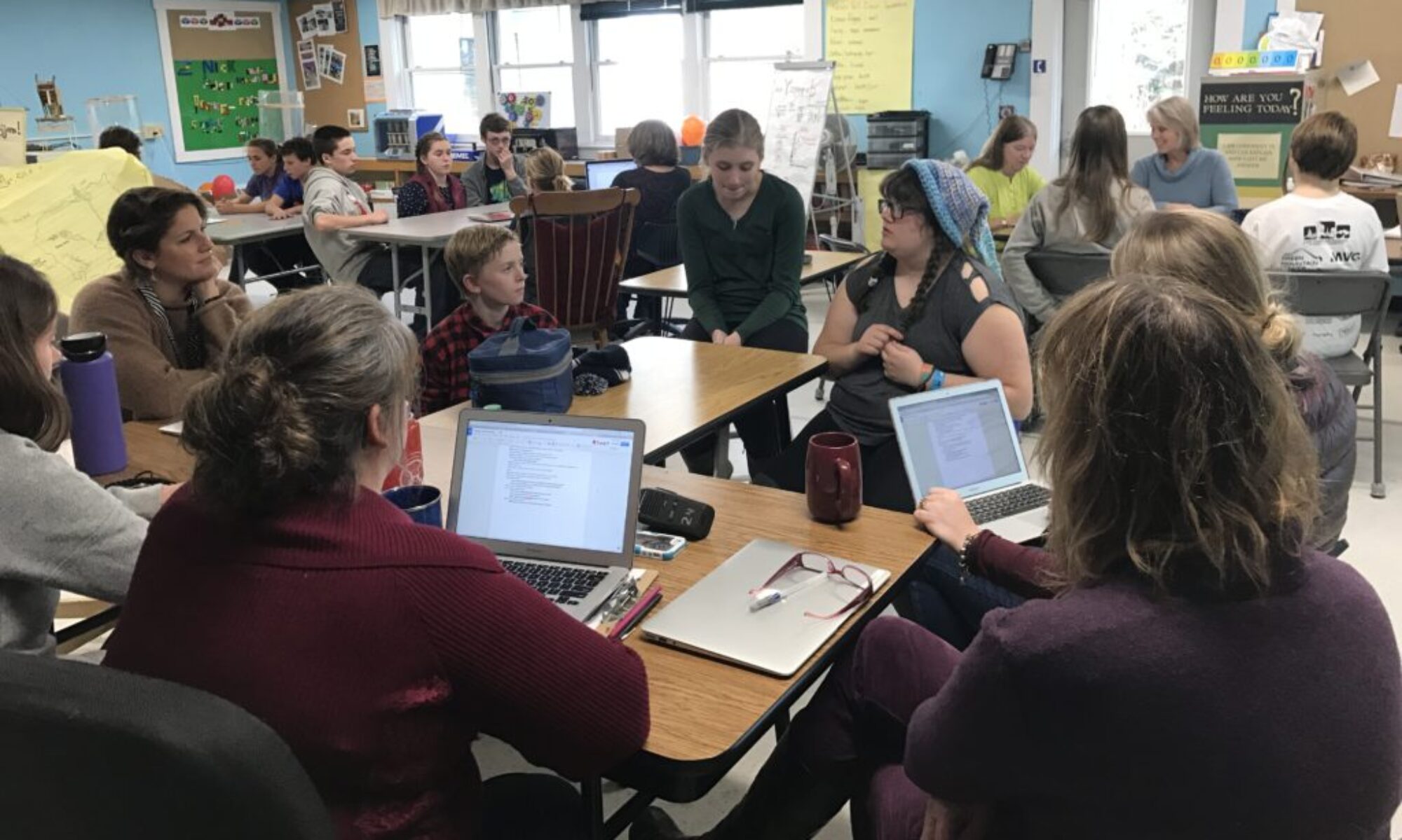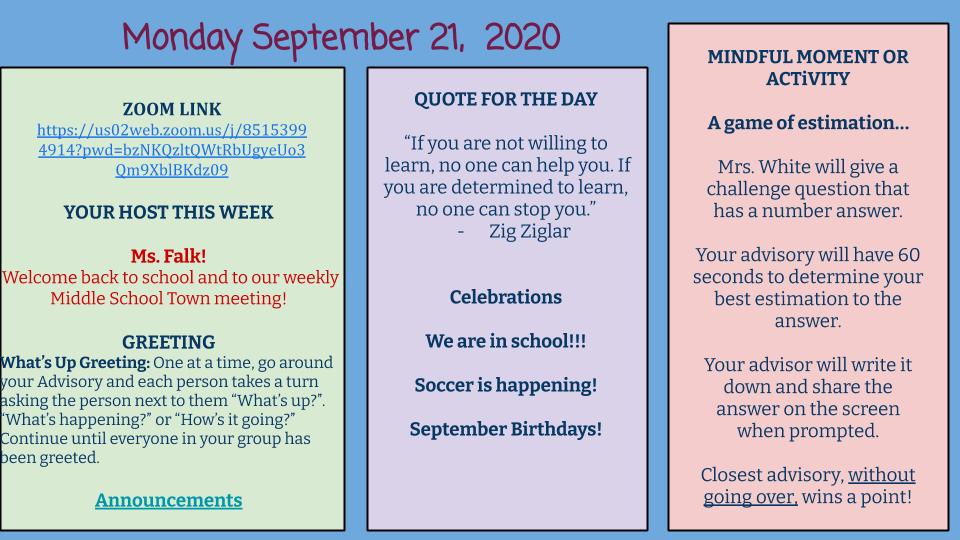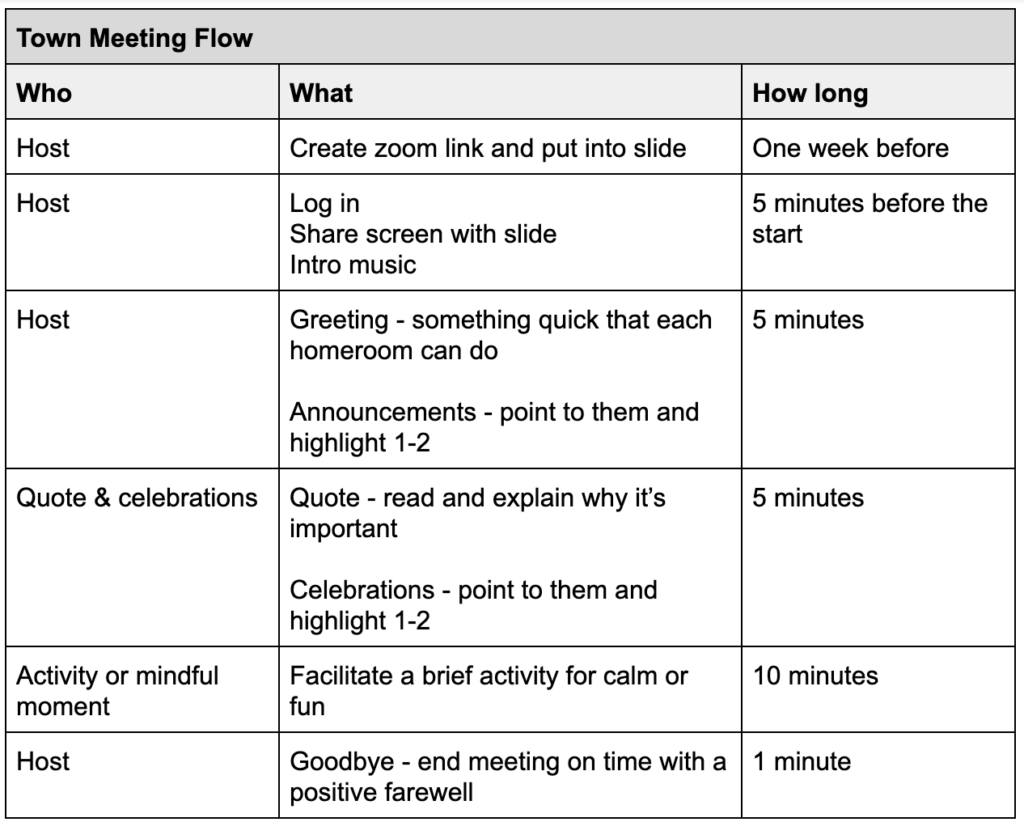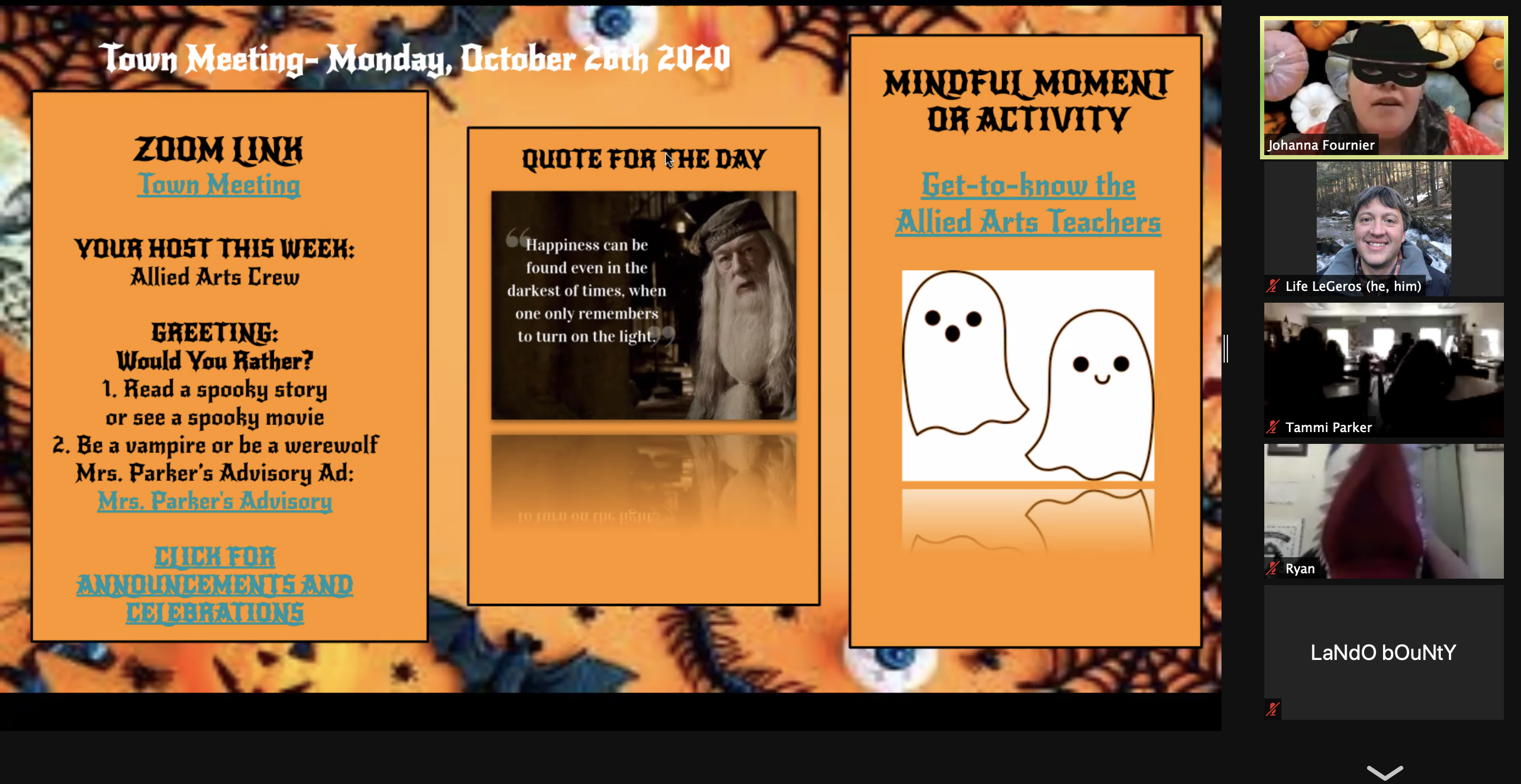At the beginning of the school year, members of the middle school leadership team at the Lyndon Town School (LTS) in Lyndonville, Vermont, were doing what they do every week: reflecting and planning.
Unlike most schools in Vermont during the current pandemic, from day one they were working with students in person five days each week. And even though they had almost all of their students in school, something was missing.
Although teachers were focusing on building relationships in their classrooms, how would they build community as a middle school? In the past, a key strategy had been to gather everybody together in the cafeteria once a month for a Town Meeting. Obviously that was off the table during pandemic schooling.
Or was it?
Getting creative about Town Meeting
Like many other schools in Vermont, the Town Meeting at LTS had multiple purposes, including:
- Build community across grade levels
- Serve as a forum for announcements
- Provide an authentic audience for student presentations
- Invite students to help plan and facilitate an event
- Inject some fun and laughter
Once the leadership team thought through these purposes together, they realized two things. First, Town Meeting was an awesome tradition that they needed now more than ever. Second, perhaps they could capture enough of this magic using a different format to make it worth it.
They resolved to do what Vermont educators have done so much of this year, by necessity: they put students first and, one way or another, made it work.
After kicking around some ideas, the outlines of a plan began to emerge. Each homeroom (advisory group) would join virtual town meetings via Zoom. The new schedule allowed only 30 minutes (compared to nearly an hour in past years), so they shortened the announcement section considerably. But they would do it every single week rather than once a month.
As the group considered this new format, they began to see some potential benefits. For one thing, more frequent meetings may lead to a stronger community building routine overall. For another, the new format might allow more student leadership than in the past. When the whole middle school gathered, it was often tough for students to effectively address everybody due to shyness, microphone awkwardness, etc. And the announcement portion of proceedings often took up a lot of time.
The new format could potentially solve some of these problems. The team designed it to be tightly structured and easy to engage with in terms of planning, facilitation, and participation.
De-centralized planning
A key priority for the leadership team was to avoid overwhelming colleagues with another planning task. Time for collaborative planning amongst teachers was at a premium.
They created a structure that would allow homerooms to “plug and play” on a rotating basis:
- Each week belonged to a different grade level
- Meetings followed a predictable flow with three distinct roles – host; quotes, celebrations, and announcements; and activity facilitator
- Each homeroom would sign up for a role on the week that their grade level was in charge
The leadership team wrote up the plan and shared it with colleagues via email. Homerooms signed up for roles, filled out the corresponding part of the slide template, and they were off and running.
So far, so good
The new Town Meeting format seems to be working pretty well. Some people even like it better than the old format. Like many things during the pandemic, it requires adaptability and a commitment to making the best of the situation. As one student noted, “I don’t really like having to do it online but we kinda have to.”
Mollie Falk, guidance counselor extraordinaire, summed up the requisite attitude this way:
Recognize that it will be far from perfect, but for kids (and adults) craving connection, it doesn’t have to be. Embrace mistakes, laugh at yourself, go with the flow.
A few particular lessons have emerged.
Focus on fun
When asked what they enjoy most about virtual town meetings, students were pretty clear that the activity portion is the star of the show. So far this year we have seen quiz competitions, an estimation math challenge, Scattergories, and an on the spot haiku contest.
The most straightforward format for interactive portions such as greetings and activities is for most of the action to take place within the homerooms themselves. As one teacher put it, “Something that works well, is to give a task or activity for each advisory to complete, then they share out with the whole group via chat or one at a time.”
For some students, this allows them to feel more connected. Several students echoed this comment: “I love being able to work with my homeroom to try and win at games.”
Teachers agree that the smaller groupings draw some students in more than the larger gatherings of the past. “Being in separate spaces make it easier to compete in competitions and get full participation. It’s easier to see if someone is not participating, since each group is smaller.”
Keep it fresh
The “plug and play” structure serves its function well. On a busy week, if necessary, each of the three homerooms at a grade level can plan separately for their role and the meeting can come together fairly seamlessly.
But some weeks demand a little something special. For Halloween, for example, music teacher Johanna Fournier designed a themed Town Meeting. Allied Arts teachers introduced themselves with Halloween themed facts about themselves.
In another example, each homeroom had developed banners and advertisements during their advisory time. It was a fantastic project and Town Meeting served as the perfect venue to showcase the ads. They tended to be both meaningful and hilarious, well deserving of the authentic audience that virtual town meetings can provide.
This advisory ad for Tammi Parker’s 8th grade advisory, otherwise known as “The Robparkarians,” was a hit.
Get your tech squared away
Most teachers are running the Zoom on projectors or Smartboards so that everybody can easily see. In some cases teachers will have two computers going, especially if they are playing the hosting role.
There are a couple of homerooms that have bandwidth issues, which can be frustrating. As one student put it, “The wifi is really hard because sometimes it lags a lot so you can’t hear but you just have to be calm about it and don’t get all mad and upset.” Indeed.
The technology integration specialist helped teachers with initial set-up. A few weeks in, she conducted a survey to understand ongoing technology problems. She is troubleshooting the issues one by one, and the school is upgrading wifi, so hopefully these issues will be ironed out soon.
Share the love
Since these virtual town meetings are shorter in duration, more frequent, and less of a production than in the past, they feel a bit lower stakes. Students can participate from the comfort of their homeroom. This draws in more students and draws out more creativity.
As Mollie put it, “Town Meeting is fun, different and creative each week as a result of rotating who is hosting. There are lots of fun ideas and now we all can share them with each other, rather than it being hosted by the same individuals each week as it once was.”
Hopefully this new format can continue to strengthen community both within and across homerooms/advisories. And once restrictions are lifted, perhaps there will be some aspects of this new format that can inform the next generation of face to face Town Meetings. But until then, LTS middle school will continue to make the best of the situation.





